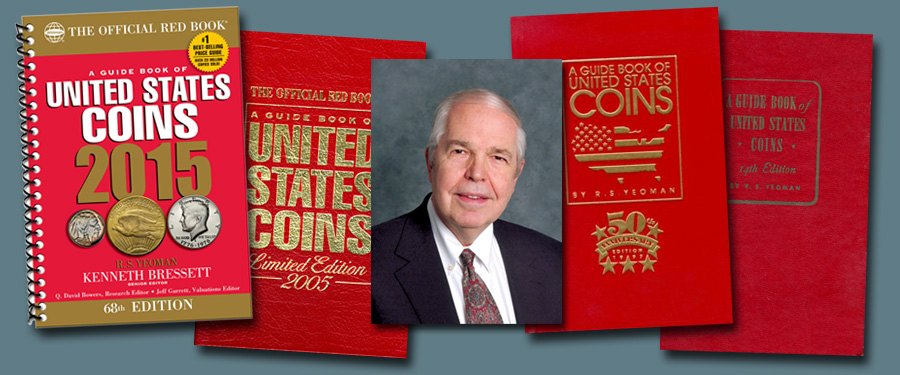
This week I begin a tour through the best-selling numismatic reference of all times, A Guide Book of United States Coins. If you have a copy of this book — and who doesn’t? — you can follow me as I go along. I will start in the beginning and continue, if plans materialize, through to the end or close.
The Guide Book first saw the light of day in 1946, and was published in Racine, Wisconsin under the Whitman label, with Richard S. Yeoman as editor. Although Dick Yeoman had numismatic experience, of course, having supervised the production of coin folders since the 1930s and in 1941 as the editor of Handbook of United States Coins, he was not a deep researcher in the subject. He tapped Stuart Mosher for that job. Mosher, who moved to McAllen, Texas, in 1946, used various sources to turn out a concise, readable book that was destined to become a bestseller. (In 1948 Mosher was named curator of the Mint Collection at the Smithsonian Institution.)
Bearing a cover date of 1947, to give it longer shelf life, the red-covered hardbound volume was distributed through hobby shops, bookstores, and other outlets worldwide. In time, copies of the first edition (made in two printing varieties) became collectible, and today a pristine copy is worth more than $1,000.
The Guide Book, soon nicknamed the Red Book, caught on, and in nearly all succeeding years it was published annually. Most recently as the 68th edition, cover date 2015, released in spring 2014. Today the Guide Book comes in a number of different iterations, including a standard hardbound volume retailing at $16.95 and $18.50 in Canada, plus other editions at different prices that are spiral bound or soft cover with the same editorial contents. Today the list of contributors to the Guide Book comprises dozens of dealers (in particular) and other experts, many more than in 1946.
Today, as you read these words, the Guide Book is one of the top ten bestselling non-fiction American titles of all time, with total sales in the multiple millions. Although with information available in Numismatic News and Coin World (which didn’t exist in 1946), plus the Internet (science fiction back then, if indeed anyone thought of it), and so on, information is available in many forms. However, the Guide Book at its very reasonable price is indeed a one-volume library for United States coins. It serves as the introduction to the hobby for many people. Of course, past the Guide Book there are many other fine references available, including on specialized subjects such as New Jersey copper coins 1786-1788, Morgan silver dollars 1878-1921, Civil War tokens, and you name it. A comprehensive library of books currently in print and relating to American coins would include several dozen volumes. Expand it to cover tokens, medals and paper money and you have at least two or three shelves full. The nice thing about building a numismatic library — which I highly recommend — is that it is relatively inexpensive. For less than $500 a fairly decent holding relating to federal coins minted from 1792 to date can be built.





